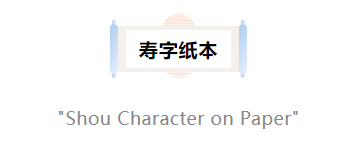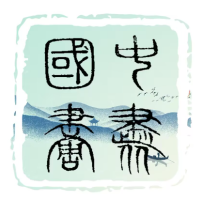
爱新觉罗·溥儒,初名仲衡,改字心畲,清恭亲王奕訢孙也。生于王室,金匙在口,不溺于荣显,而穷心于诗文书画之研习。其于山水与书法之学,功底深厚,与张大千齐名,誉曰“南张北溥”,与吴湖帆亦称“南吴北溥”。
溥儒之世路崎岖,少履锦衣玉食,继遭朱门日暮之哀。宗室日薄,不得已越洋适异邦,历尽烽火狼烟之苦。曾往东瀛、河洛,探章学问,晚岁归隐海岱之南。终生以学问自任,寝食难安,诗文书画作累累逾四百矣,所藏青瓷碧玉亦达六十余件。其珍藏亦有故宫镇院之宝“平复帖”,及唐代韩干之“照夜白”也。
溥心畲天资聪颖,勤奋学问,虽历更多逆境,亦展英才与艺术成就。自许大业在治经学,由理学始,广涉尔雅、说文、训诂、及诸子百家至诗文古辞,学问精深,故视书画为文人馀事。虽未尽心于画艺,然其作品流露出高雅清静之风,显文人之独到品格。
Aisin Gioro Pu Ru, originally named Zhongheng and later known as Xinshu, was a grandson of Prince Gong of the Qing dynasty, Yixin. Born into royalty with a silver spoon, he did not indulge in opulence but devoted himself to the study of poetry, calligraphy, and painting. His mastery in landscape and calligraphy was profound, equally famed as Zhang Daqian, earning the accolade "North Pu and South Zhang," and similarly recognized with Wu Hufan as "North Pu and South Wu."
Pu Ru's life was fraught with hardships. In his youth, he enjoyed luxury and opulence, but as the Qing dynasty waned, he was compelled to travel abroad, enduring the turmoil of war and revolution. He studied in Japan and Germany, and in his later years, he settled in the south of the Taiwan Strait. Throughout his life, he committed himself to academia, finding little repose. He created over four hundred works of poetry, calligraphy, and painting, and his collection also included over sixty pieces of fine porcelain and other art pieces. Among his treasures were the "Ping Fu Tie," a masterpiece housed in the Palace Museum, and "Zhaoye Bai" by the Tang dynasty artist Han Gan.
Pu Xinshu was naturally intelligent and diligently pursued knowledge. Despite facing greater adversities than most, he exhibited remarkable literary flair and artistic achievements. He dedicated his life to the study ofical texts, starting with rationalism and extensively exploringic philology, including "Er Ya," "Shuo Wen," "Xun Gu," and various schools of philosophy up to ancient poetry and prose. His deep commitment to learning led him to regard painting and calligraphy as mere pastimes for literati. Although he did not devote himself entirely to painting, his works exuded an elegance and tranquility that reflected a unique scholarly charm.


《山水卷》图绘诸山峭壁,高峨若天工,溪间隐居几许人家,炊烟袅袅升入云雾。远观山势层层叠叠,近赏林木郁郁葱葱。山脚之平畴,几椽茅舍,人们品茗言笑,乐也融融。
The "Landscape Scroll" depicts rugged mountains and precipitous cliffs, crafted as if by divine intervention, with homes nestled in the valleys, smoke wafting into the mist. From a distance, the mountain ridges layer upon each other, while up close, the lush greenery of the woods is striking. At the mountain base, several thatched huts are scattered, where people enjoy tea and laughter, in a scene of harmonious joy.


溥儒之《松阴举盏图》,笔走龙蛇,墨涵春水,特取马夏之法,展皴法之妙,构图之精,于山巅之间,笔墨尽显轻灵而不失刚健。
In Pu Ru's "Under the Pine Shade, Raising a Cup", the brush moves with the agility of a dragon or snake, the ink as deep as spring water, specifically adopting the techniques of Ma and Xia. The mastery of texture strokes and composition is particularly evident at the mountaintop, with the inkwork revealing both lightness and vigor.


《丛林遇雨图》所绘,山岚迷离,崖壁如刀削,瀑布如丝悬挂。雨后树木翠绿欲滴,红绿相间,更添几分生动。行人急匆于小桥,桥下之水急流旋转,两岸草木随波逐流。
"The Jungle in Rain" captures a misty mountain landscape with sheer cliffs as if cut by a knife, and a waterfall hanging like silk. After the rain, the trees appear even greener, with red and green leaves adding vibrancy. Travelers hurry across a small bridge, beneath which the water swirls rapidly, with plants along the banks flowing with the current.


《松溪楼阁图》描画溪畔巨松旁,两士回望峻岭之下高楼,笔法疾速而精确,山石皴擦自如,楼阁用笔肯定准确。溥心畬画格,开一时之风气,与南张(大千)北溥(心畬)齐名。
"Pine Creek Pavilion" portrays two scholars beside a giant pine by the creek, looking back towards a high pavilion beneath steep ridges. The brushwork is rapid yet precise, the texture strokes on rocks are freely executed, and the pavilion is painted with definitive accuracy. Pu Xinshu’s unique style set a trend in his era, being equated with South Zhang (Daqian) and North Pu (Xinshu).


《钟馗朝阙图》中钟馗形象威风凛凛,红衣翩翩,笔法精湛,刻画之技超凡脱俗。图中人物与背景,皆以写意笔法表达,既存抒情之美,又显高雅之风,是溥心畬笔下人物画之佳作。
In "Zhong Kui at the Imperial Gate", the figure of Zhong Kui is imposing, his red garments flowing, and the brushwork is exquisite, transcending the ordinary. The figures and background in the painting maintain a lyrical and elegant quality through freehand brushwork, marking it as a fine example of Pu Xinshu’s playful figure paintings.




溥心畬之画法,自无师承,乃是拟古法书名画,以书香诗韵蕴育而成。生于帝室,览群书于内府,多有观摹体悟之机。曾蒐一幅明初山水手卷,其画工细丽而雄健,风神独出,俱北宗家法,洋洋洒洒,一种澄明气爽之感,遍布画中,溥氏之笔法,几由此卷而来。故其作山水,远承宋之刘李马夏,近取明四家之唐寅,笔力健而秀逸,宛若铁划银钩,以北宗之刚劲笔法──斧劈皴之法,展示尽致,又不失秀逸之雅,复古之精神,一览无余。
观溥氏之画,表貌虽不见新奇,然艺之真,不在乎外观之新旧。艺术之创造,非但外形之更新,更在旧襟之中注新意,续古人之未竟,此中创意,实非浅酌可知,需深思而后可得其妙。
Pu Xinshu's painting style is self-taught, derived from emulating the techniques of ancient masters and the cultivated essence of literary works. Born into the imperial family, he had frequent opportunities to observe and study the vast collection of paintings in the palace, thus mastering various styles deeply. He once acquired an early Ming dynasty landscape scroll by an anonymous artist, which is characterized by its delicate yet robust style, uniquely embodying the Northern School’s approach. The scroll exudes an atmosphere of clarity and freshness, which heavily influenced Pu's technique. Therefore, his landscape paintings trace back to the Song dynasty artists like Liu, Li, Ma, and Xia, and from the Ming dynasty, he adopted the style of Tang Yin, with a vigorous and graceful brushwork akin to 'iron strokes and silver hooks,' displaying the robust techniques of the Northern School—particularly the ax-cut texture strokes—fully, without losing a refined and elegant style, thus reviving the ancient spirit of painting.
Observing Pu's art, though the outward form may not appear novel, the essence of art does not lie in the novelty of appearance. The creativity in art is not merely about updating forms but about infusing old frameworks with new life and interpretations, extending the unfinished aspirations of the ancients. The depths of this creativity are not readily apparent from a superficial view and require deep reflection to be fully appreciated.
(视频来源网络)
溥心畬书法,行草傲然,师法二王、米芾,笔势如飞,主张书法须有骨力,习小字之前,必练大字,心识笔法,意合体势,方能书法之美,刚健而流畅。其小楷《金刚经》笔墨古雅,气韵活现,堪为绝艳。溥心畬非独书画俱佳,亦深通诗词典籍,晚年多谓弟子曰:“吾宁为书家,勿谓画家;宁为诗人,勿谓书家。”此语深显其重诗心也。
Pu Xinshu’s calligraphy, particularly in running and cursive script, is bold and unrestrained, following the styles of the Two Wangs and Mi Fu, with a brushwork as fleet as flight. He advocates that true calligraphy must possess strength and suggests practicing large characters before small ones to understand the essence of brushwork and the spirit of the posture, thus achieving beauty in calligraphy that is both robust and fluid. His small script "Diamond Sutra" is rendered in an ancient style with vibrant charm, considered exquisitely unique. Pu Xinshu was not only skilled in painting and calligraphy but also profoundly knowledgeable in poetry andics. In his later years, he often told his disciples, "Rather than calling me a painter, call me a calligrapher; rather than a calligrapher, call me a poet," indicating his deep reverence for the poetic spirit.


译文:鸡足观书挑夜雨。鹤头临帖写春云。
Translation:
Reading in the Chicken-Foot Pavilion, picking through the night rain.Writing under the Crane-Head Lamp, inscribing the spring clouds.


译文: 绿绮凤凰梧桐庭院。青春鹦鹉杨柳楼台。子和先生之属。西山逸士溥儒书。
Translation:
Green Lute, Phoenix, and Parasol Tree Courtyard
Youthful Parrot, Willow Trees, and Pavilion
The Category of Master Zihé
Book of the Reclusive Scholar Pu Ru of the Western Hills


责任编辑:苗君
